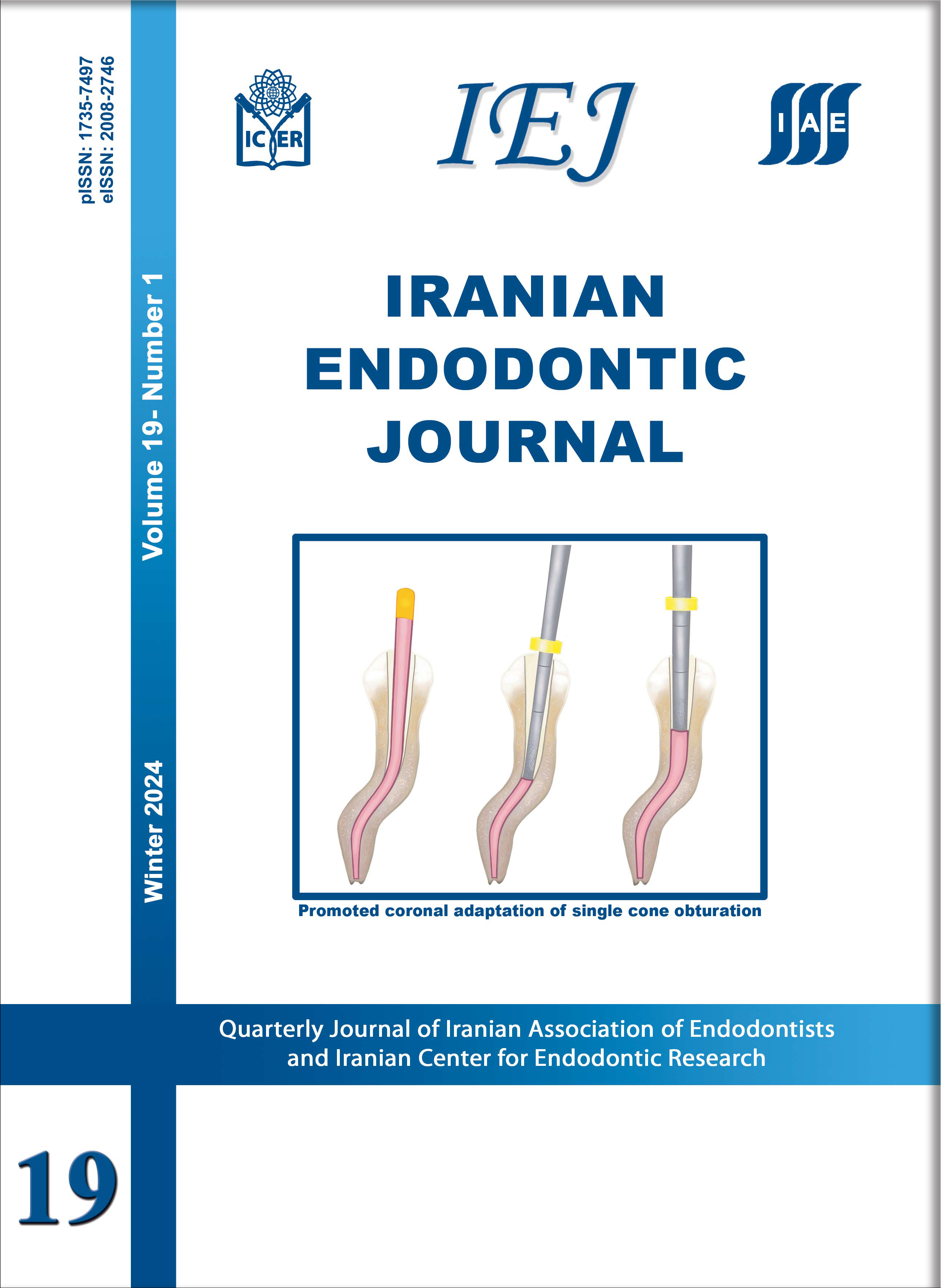Chlorhexidine gluconate, its properties and applications in endodontics
Iranian Endodontic Journal,
Vol. 3 No. 1 (2008),
10 January 2008,
Page 113-125
https://doi.org/10.22037/iej.v2i4.260
The major objective in endodontic therapy is to disinfect the entire root canal system. This requires that the pulpal content be eliminated as sources of infection. This goal may be accomplished by mechanical instrumentation and chemical irrigation, in conjunction with medication of the root canal between treatment sessions. Microorganisms and their by-products are considered to be the major cause of pulpal and periradicular pathosis. In order to reduce or eliminate bacteria from the root canal system, various irrigants have been used during treatment. Chlorhexidine is a cationic solution which can be used during treatment. It has a wide range of antimicrobial activity. Furthermore, because of its cationic structure, chlorhexidine has a unique property named substantivity. The purpose of this paper is to review different aspects of chlorhexidine in endodontics.




